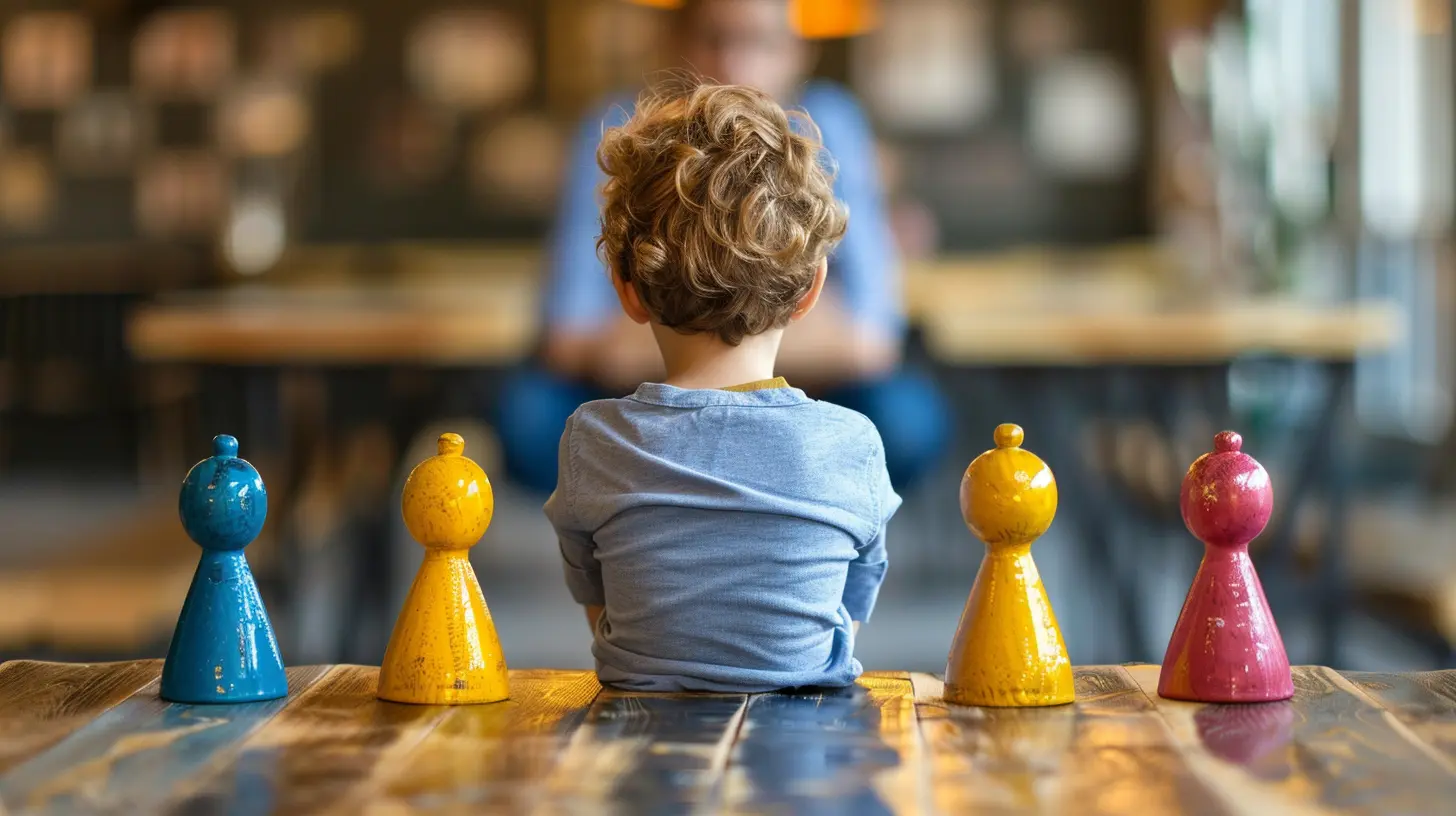Redefining Rules: How Limits Can Empower Your Child
29 October 2025
Ever wonder if saying "no" too much is turning your child into a rebel instead of a well-behaved little human? You're not alone. As parents, we often walk a tightrope between wanting to give our kids the freedom to grow and needing to set boundaries to keep them grounded. Spoiler alert: Limits aren’t the enemy. In fact, they’re one of your biggest parenting power tools.
Let’s flip the script and look at how rules, when used the right way, don’t just control behavior—they actually help kids thrive. Buckle up, because we’re about to redefine what it truly means to set limits.
Why Rules Get a Bad Rap (And Why They Shouldn’t)
Rules often feel like bricks in a wall—cold, unmovable, and kind of dull, right? But here’s the thing: without walls, there’s no house. Rules give structure, and structure helps kids feel safe. When kids know what to expect, they can breathe easier, behave better, and even get more adventurous within the safe bubble you've built for them.But let’s be honest. Growing up, we all disliked rules. No running in the house. Finish your homework before TV. Be home by 8. Sound familiar?
The reason we didn’t love them wasn't because rules were bad—it’s because we didn’t understand their purpose. And that’s exactly where we, as parents, get the chance to rewrite the narrative.
The Real Purpose of Limits: It’s Not About Control
Here’s the golden nugget: Setting limits isn’t about controlling your child; it’s about empowering them to control themselves.Think of a guardrail on a highway. It doesn’t stop the car from moving forward—it just keeps it from veering off a cliff. Limits work the same way. They guide, they protect, and they seriously reduce the chances of a meltdown (yours and your child’s).
Setting a bedtime? That’s not being strict—that’s teaching your child how to value rest. Limiting screen time? You’re helping them balance entertainment with real-life fun.
Kids aren’t born knowing these things. Boundaries teach them. Slowly, consistently.
Kids Actually Crave Boundaries (Even If They Act Like They Don’t)
Sounds wild, doesn’t it? But it’s true. Children may push back against rules, but deep down, they crave the security that limits provide. Think about it from their angle: the world is a massive, unpredictable place. When you set limits, you're giving them a fence around their playground—now they can run wild within the safe zone.When kids don't have any rules, they’re not free—they’re anxious. They don’t know what’s okay, what’s not, or how to predict your reactions. That unpredictability can lead to acting out simply because they’re overwhelmed.
Boundaries give them peace of mind. They allow your child to relax and focus on just being a kid, knowing someone else is steering the ship.
Rules As Relationship Builders
Here’s a curveball: rules can actually strengthen your relationship with your child.When done with fairness and compassion, setting limits fuels trust. Your kids learn that even if they don’t like what you’re saying, they can depend on you to keep things steady. You’re not a dictator; you’re a guide. A mentor. A team captain.
Instead of “Because I said so,” try “Because I care, and I want to keep you safe.” Framing rules with empathy changes how your child hears you.
It’s not about blind obedience; it’s about building mutual respect. You offer consistency. They offer cooperation (eventually).
How Limits Foster Confidence, Not Compliance
Want to raise a confident, independent thinker? Start with boundaries.Rules help kids learn how to make decisions within a framework. Let’s say your 8-year-old knows they can choose what to wear to school—as long as it’s weather-appropriate. This gives them the thrill of autonomy, but within a safe perimeter. They’re practicing decision-making with built-in training wheels.
Over time, kids internalize those frameworks and start applying them even when you’re not around.
So yes, the same child who once had a meltdown over snack choices is learning how to self-regulate, solve problems, and advocate for themselves—all because you set some loving boundaries early on.
Giving Choices Within Boundaries
This is where the magic happens.Children don’t need total freedom. What they need is the illusion of freedom—choices within a set of non-negotiable boundaries.
Let’s say it’s time for bed. Instead of saying, “Bed. Now. No discussion,” you can try, “Do you want to brush your teeth before or after you put on your pajamas?” The bedtime isn’t up for debate—but how they get there is.
This approach gives your child a sense of control and reduces power struggles. It’s all about balance: too many rules feel suffocating, but too much freedom can feel like chaos.
The Secret Sauce: Consistency + Connection
Rules only work if you actually stick to them. Consistency is critical. If the rule is no desserts before dinner, it can’t suddenly become okay when you’re tired or they pull out the puppy eyes.Kids are like little scientists. They test rules to see if they're real or if they change with your mood. When they see you holding the line—even when it's inconvenient—they learn that the structure is safe, predictable, and worth respecting.
But here’s the twist: consistency should never come at the cost of connection.
Rules don’t have to be rigid. You can be firm and kind at the same time. You can empathize with your child’s frustration without changing the rule. The message is: “I hear you. I understand. And this boundary is still here to help you.”
When to Flex and When to Hold Your Ground
Not all limits are forever. As kids grow, boundaries should evolve. A bedtime for a toddler isn’t going to match one for a 12-year-old, right?The key is staying responsive. When your child shows they can handle more responsibility, loosen the reins a bit. Let them know you notice their growth.
That said, some non-negotiables should always stay firm: safety, respect, kindness. These are your family’s core values. They should be woven into every rule you set.
So yes, adapt and adjust. But don’t be afraid to hold the line when it matters.
What Happens When There Are No Rules?
Let’s try a little mental time-travel. Imagine you’re in a new job, and your boss tells you there are no expectations. No schedule. No goals. Just… figure it out?Sounds like a dream at first, but it eventually leaves you confused, anxious, and totally unproductive.
That’s your child in a no-limits environment.
Too much freedom too soon short-circuits development. Children in rule-less environments often become overwhelmed, insecure, or impulsive—not because they’re bad kids, but because they’re operating in the dark.
Boundaries give kids the light they need to find their way.
Not All Rules Are Created Equal
Let’s be real—some rules are more about our convenience than our child’s development. It’s important to reflect and ask yourself: Why am I setting this limit?Is it to teach responsibility? Safety? Health? Emotional intelligence?
Or is it just to make your day easier?
Now, there’s nothing wrong with wanting smoother days (let’s be honest, parenting is hard). But when rules are only about adult comfort, kids can sense it—and that’s when resistance kicks in.
The best rules are rooted in values, not control. They’re meant to guide kids toward becoming the kind of humans who can think, empathize, and thrive.
Making Room for Mistakes (Theirs and Yours)
Here’s a little parenting truth bomb: You’re going to mess up. Your kids will too. A lot.And that’s okay.
Limits should never come with shame. When your child crosses a boundary, it’s not a sign of failure—it’s a learning opportunity. Same goes for you. Maybe you set a rule that was too rigid or didn’t explain it well. Own it. Talk about it. Adjust.
Every mistake is a stepping stone toward better understanding.
Remember: The goal isn’t perfection—it’s progress with connection.
Wrapping It Up: Rules Are Love in Disguise
So what’s the takeaway from all this? Limits aren’t about squashing your child’s spirit. When created with intention, communicated with compassion, and enforced with consistency, rules guide kids toward becoming their best, most capable selves.They help kids feel safe, build confidence, learn responsibility, and develop respect—first for their parents, then for themselves, and eventually for the world around them.
So next time you set a rule, don’t feel like the bad guy. You’re not stifling your child—you’re giving them the tools to fly.
Welcome to the parenting revolution, where rules aren’t about control… they’re about empowerment.
all images in this post were generated using AI tools
Category:
Positive ParentingAuthor:

Liam Huffman
Discussion
rate this article
1 comments
Selena Moore
This article highlights a crucial aspect of parenting: boundaries can indeed foster independence and confidence. By redefining rules, we empower our children to understand responsibility, make choices, and ultimately thrive in their personal growth.
November 15, 2025 at 5:40 AM

Liam Huffman
Thank you for your insightful comment! I'm glad you found the article's focus on boundaries and empowerment valuable.


